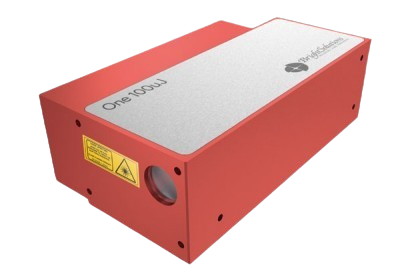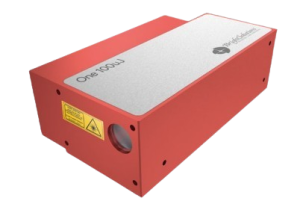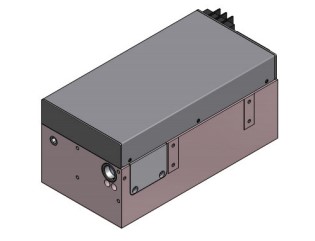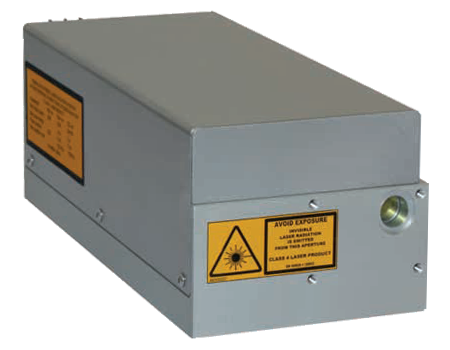One
DPSS Laser, ns pulsed, 1030-1064nm, up to 4W, up to 200µJ, passive Q-switch, 5-20 ns, up to 30kHz
The One Series is an ultra-compact, rugged, versatile, nanosecond pulsed (up to 200µJ), passive q-switch laser series designed for OEM integrators and application specialists working with industrial and portable applications. These lasers provide sufficient peak power for extremely high-quality metal & plastic marking in compact & portable marking systems or for airborne LIDAR. With its compact & efficient contact-cooled package, attractive pricing, optional CW operation with up to 4 W average power, and configurable options & add-ons, this 1030nm series offers easy, flexible integration possibilities and exceptional, cost-effective performance for a range of applications.
We’re experts in selecting the right laser for your application!
One Miniaturized DPSS Laser Platform Examples:
Customization options are available. Let us know what you need!

Let us help choose the right configuration for you!
Benefits:
- Designed for compact and portable applications:
This miniaturized DPSS laser is perfect for compact marking systems and portable instrumentation applications. - Ultra-compact and easily integrated:
Our smallest form factor, with minimal facility requirements for easy integration into various portable and industrial applications. - Rugged, lightweight single unit design:
Ensures durability and reliability for various compact & portable applications, reducing downtime and maintenance costs. - Conductively cooled:
Reduced footprint with water-free cooling, resulting in low-maintenance and cost-effective, yet efficient cooling.
- High peak power and excellent beam quality:
Provides precise and powerful laser output, enabling high-quality and accurate results in a wide range of applications. - Optional beam expanding and collimation optics:
Help shape and direct the laser beam, ensuring maximum energy is delivered to the target. - Optional add-ons & customizable:
From a red aiming beam to water cooling, beam expanding & collimation, CW operation, and beyond. Let us know what you need!
Options Available
- Internal photodiode
- Beam Expanding and Collimating optics
- Red aiming beam
- Heat sink
- AC DC Power Supply
- Custom packaging
Check out this research study, authored by one of our successful customers, titled:
“High-Precision Neural Modulation with RPMC’s “One” Nanosecond Laser: Photoacoustic vs. Photothermal Insights”
Summary: RPMC’s nanosecond lasers offer unmatched precision for neural modulation using photoacoustic techniques. These methods enable researchers to selectively stimulate or map neural activity with high spatial and temporal resolution, advancing neuroscience, biophotonics, and medical applications. Ideal for academic research and clinical innovation, these lasers support breakthroughs in neural therapy development, brain mapping, and non-invasive diagnostics, catering to the growing demand for precise, versatile tools in medical and scientific fields.
Check out this white paper, authored by one of our successful customers, titled:
“Optoacoustic Brain Stimulation at Submillimeter Spatial Precision”
Summary: Utilizing a 1030nm One Series laser from Bright Solutions, we report spatially confined optoacoustic neural stimulation through a miniaturized Fiber-Optoacoustic Converter (FOC). The FOC has a diameter of 600µm and generates omnidirectional ultrasound wave locally at the fiber tip through the optoacoustic effect. We show that the acoustic wave generated by FOC can directly activate individual cultured neurons and generate intracellular Ca^2 transients. The FOC activates neurons within a radius of 500µm around the fiber tip, delivering superior spatial resolution over conventional piezo-based low-frequency transducers. Finally, we demonstrate direct and spatially confined neural stimulation of mouse brain and modulation of motor activity in vivo.
Don’t hesitate to ask us anything!
| Wavelength (nm) | |
|---|---|
| Type | Pulsed DPSS Lasers, Airborne Laser, Low SWaP, Ruggedized, Adjustable Rep Rate, High Peak Power, Customizable |

 SHIPS TODAY
SHIPS TODAY 







